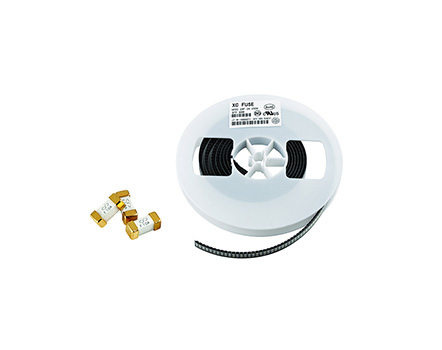
Fuses can be divided into recoverable and disposable fuses. Recoverable fuses are commonly referred to as self restoring fuses. The biggest functional feature of these fuses is that after the circuit fault is eliminated, the fuse can be restored for recycling; The disposable fuse is what we refer to as a disposable fuse. It is disposable and cannot be reused and must be replaced. Its biggest functional feature is its high segmented ability, which can be divided into fast break and slow break fuses; Fast or slow break refers to the reaction speed of the fuse to the fault current. Today we will learn about the relevant parameters of a 0.3A self recovery fuse.
There are two types of 0.3A self recovery fuses, domestic and imported. Currently, there are several models of domestic 0.3A self recovery fuses available in stock in Shenzhen, including A6-030, A16-030, A30-030, A60-300, A72-300, ASMD1812-030, ASMD1206-030, ASMD2016-030, and more. Among them, A6-030, A16-030, A30-030, A60-300, and A72-300 are plug-in fuses, which are welded by insertion method and have low welding process requirements. Boards with small space requirements can be selected. The maximum current of a 0.3A plug-in self recovery fuse is 40A. The three models ASMD1812-030, ASMD2016-030, and ASMD2018-030 are patch type self recovery fuses, characterized by their small size and suitability for compact board spaces. The maximum current is 100A. When selecting domestically produced 0.3A self recovery fuses, in addition to the maximum voltage and packaging method of the fuse, the maximum current that the fuse can withstand should also be considered.
The imported 0.3A self recovery fuses include Lite's 2016L/030 and 2920L/030 models, both of which are patch type fuses with a maximum voltage of 60V. Nowadays, the technology of domestic fuse manufacturers is mature, and there are basically different concerns about product quality and quality. The order cycle of domestic fuses is generally much longer than that of imported ones. When selecting a 0.3A self recovery insurance system, the biggest difference between them is the price. We all know that the price of imported fuses is definitely much higher than that of domestic ones, In addition to tariffs, imported fuses also have a price difference issue with intermediaries. Moreover, the ordering cycle of imported Lite fuses is relatively long. Therefore, if it is not a non Lite circuit that cannot be avoided, it is also the best choice for engineers to choose domestic self recovery fuses to replace imported fuses!
Read recommendations:
heater for small room with thermostat
Principle of Resettable Current Fuses
Where are car plug-in fuses usually located in cars?slow fuse photography